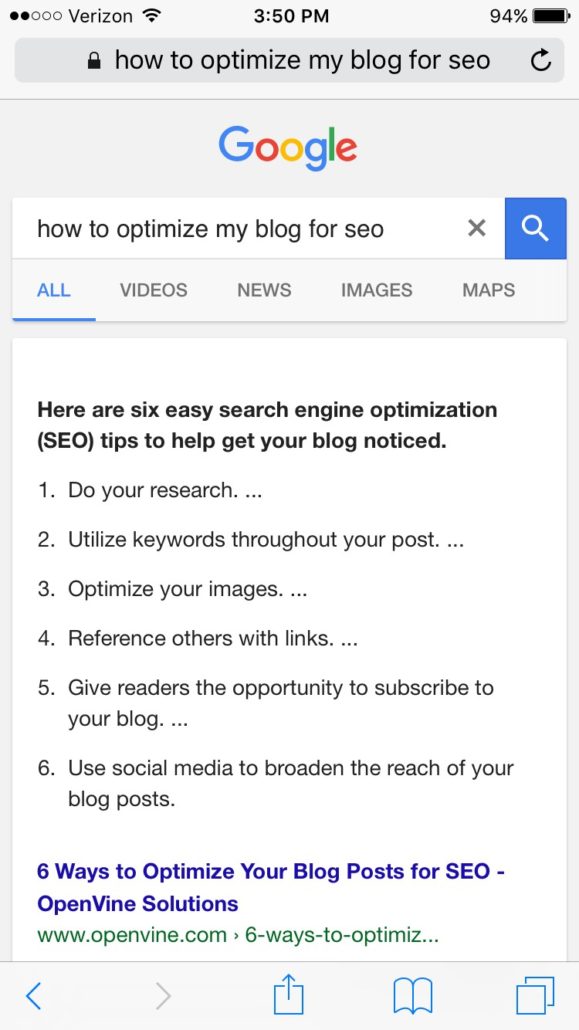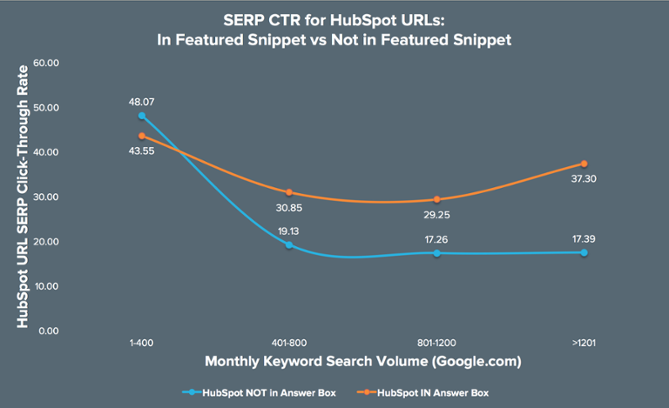Since its inception, Google has tried to satisfy searchers’ intent and deliver the most streamlined user experience. And with each update, each algorithm, each new feature, the search engine superstar gets closer to the mark.
Featured Snippets, first introduced back in 2014, are one of Google’s greatest strides in meeting searchers’ needs. They replace syntax with semantics and offer the most relevant, convenient answers to each wanting user. So much, in fact, that many experts believe these little snippets of information are actually revolutionizing the entire search experience – including the way that we optimize for it.
Whether you are a business owner, digital marketing manager, SEO rookie, or all of the above, there is no doubt that Featured Snippets can offer significant organic opportunities for your website. And it can all start here.
This is your guide to Google’s Featured Snippets. This is your key to ranking above position 1 in Google’s first-page organic search results, to driving relevant traffic to your website, and to getting your brand noticed. Let’s begin with the basics.
What are Featured Snippets?
Featured Snippets are Google’s way of giving us fast answers to common questions, right in the search results. Often in the form of definitions, how-to instructions, and other answers/solutions, Featured Snippets are separate blocks of content that appear above the organic listings on the first search results page.
Featured Snippets present users with answers without having to navigate to a website. Extracted from a given web page, they contain a summary of an answer, a page title and URL, and a link to the corresponding source.
What are the Benefits of Featured Snippets?
 Featured Snippets take up substantial real estate in Google’s SERP. For the mobile user, Featured Snippets can occupy an entire above fold experience. With all the space they consume, Featured Snippets practically scream to a searcher, “I can give you what you need!” or “Click me, I ranked above the rest!” In many cases, a user will respond.
Featured Snippets take up substantial real estate in Google’s SERP. For the mobile user, Featured Snippets can occupy an entire above fold experience. With all the space they consume, Featured Snippets practically scream to a searcher, “I can give you what you need!” or “Click me, I ranked above the rest!” In many cases, a user will respond.
Featured Snippets can double your organic real estate in the SERP:
In order to achieve a Featured Snippet, a website must rank on the first page of Google’s organic search results – anywhere between positions #1 and #10. This high ranking, combined with clear, quality content, tells Google that the website is credible and relevant enough to be positioned at the very top of the search results.
Those who are fortunate enough to earn a Featured Snippet rank not only once, but twice in the SERP. They rank in the Featured Snippet spot in addition to their listing in the organic results. When you rank twice on the first page of Google, you also look more credible to users, improving your page’s chances of being clicked.
In many cases, Featured Snippets show high CTRs and traffic spikes:
Many marketers debate the merit of Featured Snippets, claiming that they give users no incentive to click on a page. If the answer is placed right in front of users, and they get what they are looking for, why would they take the time to click through?
While seemingly a valid argument, these disbelievers couldn’t be more off. Substantial research surrounding Featured Snippets has proved that the standout located at the top of the SERP actually brings in more organic traffic and sees a higher click-through rate than its standard competitors.
SEO spearhead MOZ cites two noteworthy examples of Featured Snippets raising the charts: When Glenn Gabe lost their Featured Snippet position, they also lost over 39,000 clicks to their website in a two-week period. When HubSpot earned the Featured Snippet position on high-volume keywords, they experienced an average 114 percent boost in click-through rate:

On average, sources say that websites in the Featured Snippet spot will see a 20-30 percent spike in organic traffic, though some companies have experienced as high as a 516 percent traffic jump.
Featured Snippets are also highly prevalent:
Though Featured Snippets are not new to Google’s search results, they are becoming more prevalent. In their two-year lifespan, Featured Snippets have quintupled in frequency, and more than doubled over the last 12 months. Currently, they appear in almost 10 percent of all SERP content.
This is one of the primary benefits of Featured Snippets, simply that they are there. They are being utilized day-in and day-out, and judging by their recent rise in occurrence, it seems they are not going away. Websites and thought leaders must respond. Rather than letting other sites earn that top-notch position in the search results, they should fight for it. They should optimize their content for Featured Snippets, and subsequently snag that spot.
How Do You Win a Featured Snippet?
While over two-years-old now, Featured Snippets remain a mystery to a lot of search engine optimizers. Because in truth, there is no single formula for winning this position. There is no exact science to how Google pulls in Featured Snippets. Even more, there is no guarantee you’ll ever see your content featured. But because Featured Snippets are free, and often a shortcut to the top organic ranking, optimizing your content for them really can’t hurt.
The best way to build and optimize content for Featured Snippets is to first analyze current opportunities and see where you have the greatest potential. This means,
- Conducting keyword research: The best way to begin keyword research is to try to anticipate what your customers are searching for and what they want to know. Then, determine which of these are the highest volume queries, and which produce or have the potential to produce a Featured Snippet. How-to instructions, questions and answers, and definitions have the greatest propensity to get pulled in.
- Evaluating rankings and the competition: Many people believe that to earn a Featured Snippet, all you need to do is answer a question or create relevant content around a given theme. But as discussed previously, you have to rank on page 1 to even get to the point where Google will consider you for a spot. And to rank on page 1, you must be able to hold your own against the competition.
Consider this example. Say you want to earn the Featured Snippet for the query, “What is SEO?”, which produces over 33K searches per month. You have a strong domain authority of 54, but the websites ranking on page 1 for this term have an average domain authority of 80. Can you compete? Perhaps, but in the meantime, you may consider going after a less competitive, still frequently searched term such as, “How to optimize my blog for SEO” where the DA ranges upwards of 40.
If your content is not currently ranking on page 1, it does have the potential to get there. Quality backlinks improve domain authority, which in turn helps rankings. If your content is already ranking on page 1 for a target query, or has the potential to do so, then you are ready to optimize for the Featured Snippet spot.
Featured snippets are extracted from web pages that have clear, straightforward answers relating to a user’s query. That being said, it’s important to ensure that search engine crawlers and users alike can easily find and interpret the content. Some best practices for Featured Snippet optimization include:
- Placing your target keyword in the page headers (H1, H2s, and H3s)
- Formatting your content in structured lists (bulleted or numbered lists)
- Sectioning content into a Q&A style format with clear questions and straightforward answers
- Keeping content sections clean and concise (between 54 and 58 words)
With Millennial markets surging, mobile usage growing, and the demand for fast, quality content increasing, Featured Snippets appear to be Google’s way of meeting users’ needs. Businesses, websites, marketers—it’s time we follow suit. Step up to the plate and serve users’ a full course of the content they are craving.
If you’d like to learn how Synapse SEM can help improve search engine optimization on your website, please complete our contact form or call us at 781-591-0752.

